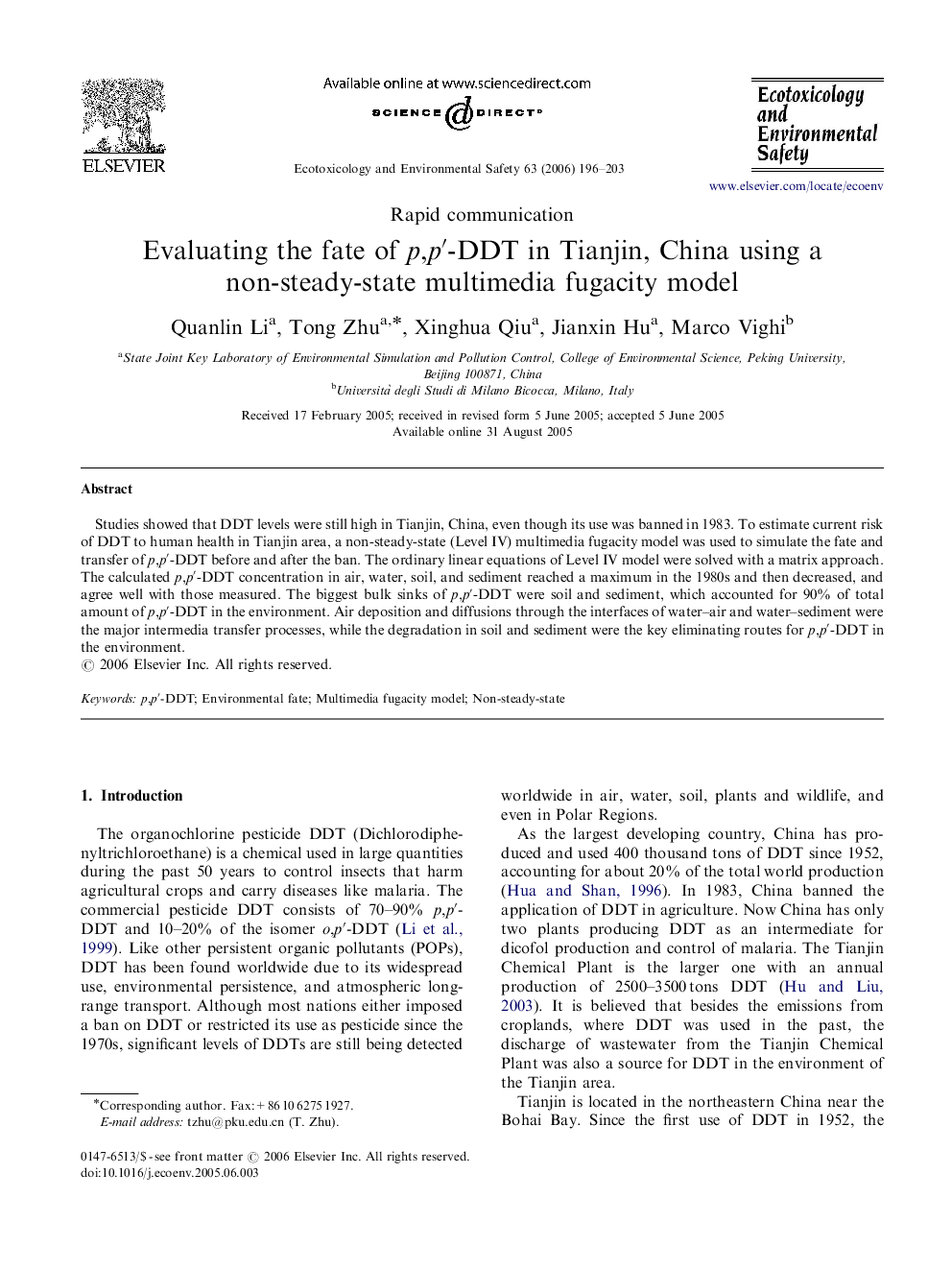| Article ID | Journal | Published Year | Pages | File Type |
|---|---|---|---|---|
| 4422524 | Ecotoxicology and Environmental Safety | 2006 | 8 Pages |
Studies showed that DDT levels were still high in Tianjin, China, even though its use was banned in 1983. To estimate current risk of DDT to human health in Tianjin area, a non-steady-state (Level IV) multimedia fugacity model was used to simulate the fate and transfer of p,p′-DDT before and after the ban. The ordinary linear equations of Level IV model were solved with a matrix approach. The calculated p,p′-DDT concentration in air, water, soil, and sediment reached a maximum in the 1980s and then decreased, and agree well with those measured. The biggest bulk sinks of p,p′-DDT were soil and sediment, which accounted for 90% of total amount of p,p′-DDT in the environment. Air deposition and diffusions through the interfaces of water–air and water–sediment were the major intermedia transfer processes, while the degradation in soil and sediment were the key eliminating routes for p,p′-DDT in the environment.
